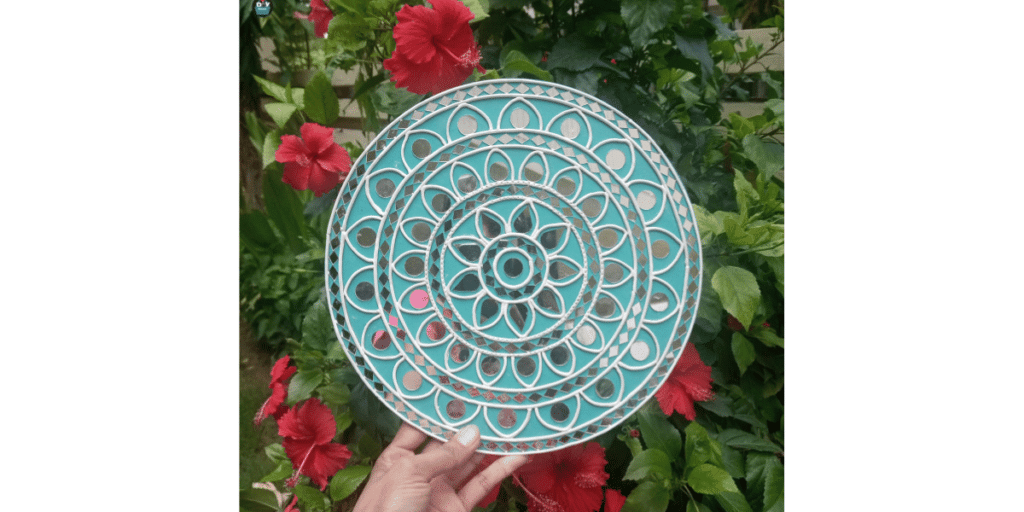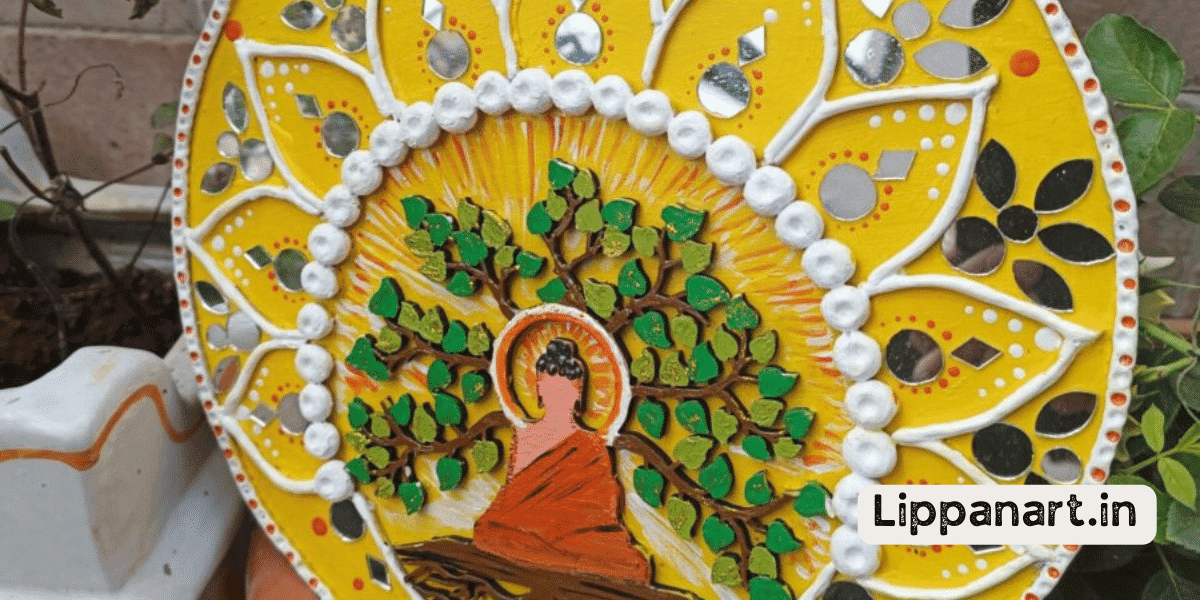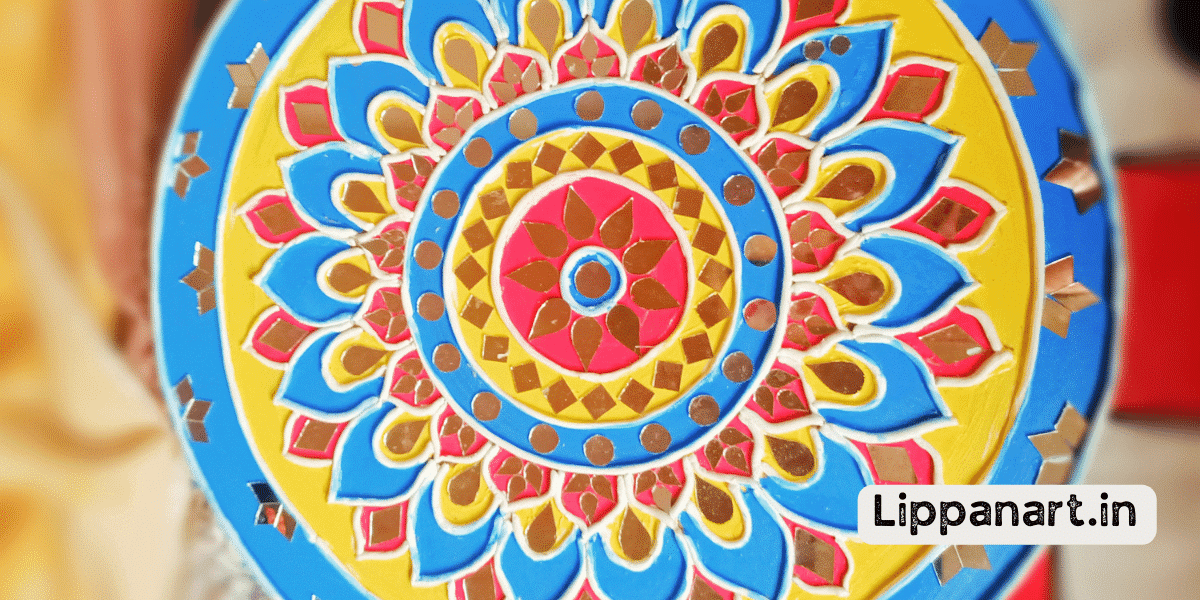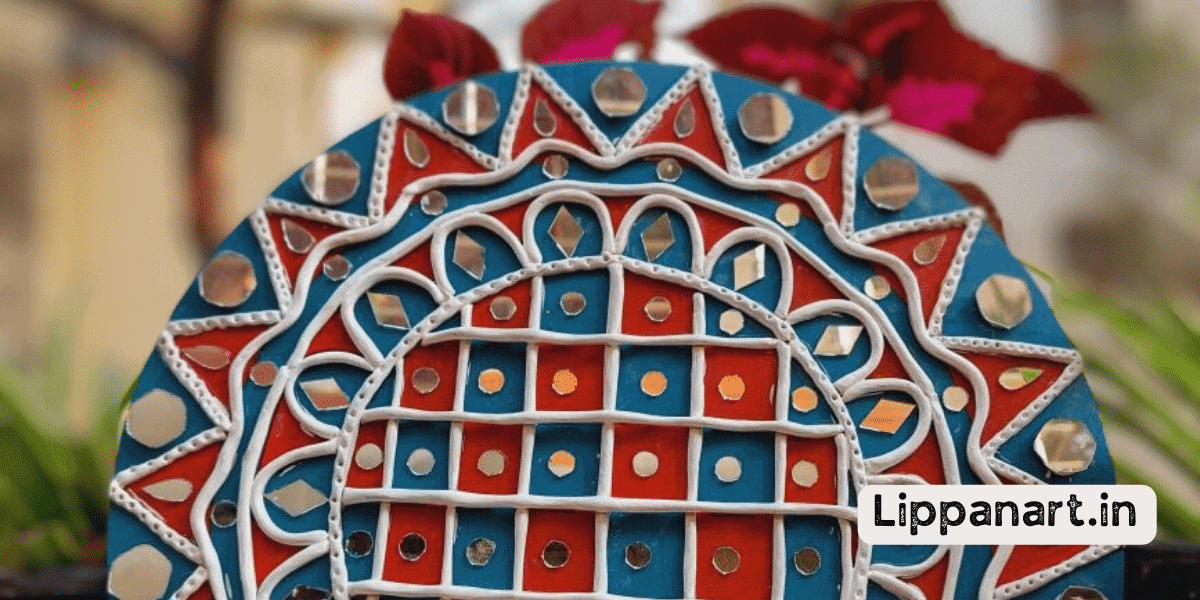With over 11,000 years of history, lippan art is a traditional form of art that has stood the test of time. Despite its appeal, lippan art has its problems. From cracking to insect infestation, learn about the common issues faced by lippan art aficionados and how to combat them.
You can enjoy this timeless art form for years by being proactive and taking the right steps.
Key Takeaways
- Mixing and proper application of clay can lead to cracking in lippan art.
- Inadequate protection from the elements, such as weather damage and insect infestation, can cause surface damage and fading colour.
- Proper surface preparation, ventilation, and use of weather-resistant and heat-resistant sealants are important for preserving lippan art.
- To prevent mould, discolouration, warping, and water damage, it is crucial to control humidity, store the art in a cool, dry place, and regularly clean and maintain it.
Cracking
You’ll often find that Lippan Art can crack over time. A combination of factors such as insufficient mixing of the clay, improper application, residue buildup, weather damage, and inadequate protection
usually causes this.
The clay mixture can become brittle without sufficient mixing, leading to cracking. When applied, it should be done evenly to reduce the risk of cracking. Residue buildup can also cause the clay to crack, as the buildup of materials can cause inconsistencies in the material.
Cracks can develop due to weather fluctuations, causing the expansion and contraction of materials. Finally, inadequate protection can also lead to cracking, as the clay isn’t adequately shielded from the elements.
To avoid cracking, it’s important to mix the clay correctly, apply it evenly, clean off any residue, protect it from the elements, and take other precautionary measures.

Insect Infestation
You may find that insects are attracted to Lippan Art, leading to an infestation. It’s important to have a proper pest control system in place to prevent this.
Climate control is also essential to ensure the conditions aren’t conducive to insect infestation. A protective coating can be applied to artwork to preserve it and prevent insect damage. It’s important to use the right application techniques when applying the coating to ensure proper coverage.
Finally, it’s recommended to have a preservation strategy in place to help protect the artwork from any potential insect infestation that may arise. The strategy should encompass all the abovementioned approaches, including pest control, climate control, protective coating, application techniques, and preservation strategies.
Taking these preventive measures will help protect the artwork from any potential insect infestation and ensure its longevity.
Fading Color
You’ll likely experience fading colour with Lippan Art over time, especially if it needs to be properly cared for. Aesthetically speaking, fading colour is often an undesirable result that can be caused by several factors, including:
- Sourcing materials – High-quality, vibrant colours for Lippan Art come from sourcing the right materials, such as natural dyes and minerals.
- Uneven application – If the clay is applied unevenly, this can lead to poor results and fading colour.
- Insufficient ventilation – Without adequate ventilation, pigment and colour can fade from the artwork.
These are just a few common issues that can lead to fading colour in Lippan Art, but there are many more. Additionally, inadequate protection from light and exposure to the elements can play a role.
Ultimately, it’s up to the artist’s aesthetic preference to decide which materials and methods of protection to use to ensure the longevity of the artwork.
Poor Adhesion
The adhesion of the clay to the surface can be good if applied correctly. Poor adhesion can result from inadequate surface preparation, dirt accumulation, humidity levels in the room, or exposure to weather damage. To ensure proper adhesion, one must understand the causes and find ways to prevent them.
| Causes | Prevention |
|---|---|
| Surface Preparation | Clean the surface using a damp cloth with mild soap. |
| Dirt Accumulation | Regularly remove dirt and dust from the area. |
| Room Humidity | Make sure the room is at an optimal humidity level. |
| Weather Damage | Apply a weather-resistant sealant. |
| Heat Resistance | Apply a heat-resistant sealant. |
These preventive measures will ensure the longevity of your lippan art piece’s longevity and prevent adhesion issues. It is important to take into account the environment the piece will be in, as well as the type of clay used. With the right preparation and maintenance, your lippan art can withstand the test of time and look beautiful for years to come.
- Editor’s Choice
- Best Seller
- Amazon Choice
Shrinking
When exposed to heat, your lippan art may shrink and become distorted. This common problem can be difficult to fix, but with the right preservation techniques, you can restore your art to its original form.
Here are three ways you can prevent this from happening:
- Surface preparation: Before starting your lippan art, ensure the surface is properly prepared. This means cleaning the surface, ensuring no dust or dirt, and possibly applying a primer.
- Climate effects: Be aware of the climate you’re working in. Make sure you’re working in an area with controlled humidity and temperature, and avoid areas of extreme heat.
- Humidity control: Check the humidity levels of the area you’re working in and adjust as needed. If the humidity is too low, use a humidifier to bring it up to the optimal level.
Preserving your lippan art requires careful attention to detail. Taking the time to prepare the surface, control the climate, and maintain the optimal humidity can help prevent shrinking and distortion.
With the right restoration techniques, you can ensure your lippan art lasts for years.
Moulding
If you take the proper precautions, your lippan art may be protected from moulding. To prevent this from occurring, you must be aware of the best storage techniques and understand the importance of humidity control.
If you need to gain knowledge in these areas, it’s important to research the best practices for surface preparation and humidity prevention. Storing lippan art in a room with consistent temperatures and humidity is also important.
To ensure your artwork stays free from mould, make sure to dry the surface of the art before storing it away. Additionally, consider using a dehumidifier to reduce the humidity in the room and keep your artwork safe from mould.
Discolouration
You can help prevent discolouration of your lippan art by taking a few simple precautions.
To ensure your art remains vibrant and colourful, you’ll need to weatherproof it, use sealing techniques, and pay attention to humidity levels.
Here are a few steps you can take to safeguard your art:
- Weatherproof your lippan art with a sealant or varnish to prevent fading and discolouration from exposure to the sun and other elements.
- Store your lippan art in a cool, dry place. Please ensure the artwork remains dust-free by regularly wiping it with a soft cloth.
- Humidity levels can also affect lippan art. Ensure you keep it in an environment with consistent, low humidity levels, and consider using a dehumidifier if necessary.
By keeping these tips in mind, you can successfully protect your lippan art from discolouration and maintain its brilliance for years to come.
Using proper storage and maintenance, your lippan art will remain a stunning centrepiece in your home.
- Editor’s Choice
- Best Seller
- Amazon Choice
Warping
To protect your lippan art from warping, both humidity levels and temperature must be regulated. Warping is a common issue in lippan art and can be caused by heat damage, dust accumulation, and water damage.
To protect against warping, you must choose the right materials, glue, and environment. When it comes to material selection, opt for strong and durable materials, as they’re less prone to warping. You should also use a quality glue designed for lippan art to ensure a secure bond between the pieces.
Lastly, you should maintain a moderate temperature and humidity level in the environment where your lippan art is being stored or displayed. When it comes to heat damage, keep your lippan art away from direct sunlight or any other heat source. You should also use a fan or air conditioner to regulate the temperature of the room.
Dust accumulation is another factor contributing to warping, so keeping your lippan art dust-free is important. Lastly, water damage can also lead to warping, so keeping your lippan art away from any water source is important.
Blistering
Use the right materials and glue when creating lippan art to prevent blistering. Blistering is a common problem with lippan art caused by moisture and heat buildup. It’s important to understand the sealing techniques, moisture control, and heat management involved to avoid this.
Quality materials and surface protection also play a role in creating successful lippan art. Here are three tips for avoiding blistering:
- Use high-quality materials to ensure the best possible result.
- Use a glue that seals the pieces together without trapping moisture.
- Monitor the temperature of the environment where the art is being created.
With the right materials, glues, and techniques, you can create beautiful lippan art without worry of blistering. Investing in quality materials and understanding how to protect your art from the elements will help ensure your masterpiece is as durable and long-lasting as possible.
With the correct approach, anyone can create a timeless masterpiece.

Deterioration
Taking good care of your lippan art is crucial to prevent it from deteriorating. Make sure to maintain it properly. With it, the art can be protected from water damage, dust accumulation, improper cleaning, sun exposure, and humidity control issues. To ensure your lippan art remains in its best condition, you must take measures to protect it from these potentially damaging factors.
Water damage can cause the colours of the art to fade and the surface of the art to become brittle, so it’s important to keep the art away from any water sources. Dust buildup can dull art pigments and colours, so regularly clean with a soft cloth. Improper cleaning can lead to scratches and discolouration, so be gentle and use only soft cloths and mild cleaning solutions. Sun exposure can cause the colours to fade and the surface to become brittle, so it’s best to hang the art in a spot away from direct sunlight. Finally, humidity control is also important to prevent the art from warping and moulding, so it’s important to keep the humidity level in the room at a stable level.
Conclusion
Lippan art is a unique and intricate craft. However, it does come with its own set of challenges. 70% of lippan art pieces will suffer from some damage. These damages include cracking, insect infestation, fading colour, poor adhesion, shrinking, discolouration, warping, blistering, and deterioration.
Fortunately, with proper care and attention, these issues can be minimized. By taking the necessary precautions, you can ensure that your lippan art remains in good condition and lasts for years.














